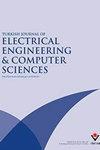Robust and efficient EBG-backed wearable antenna for ISM applications
IF 1.5
4区 计算机科学
Q4 COMPUTER SCIENCE, ARTIFICIAL INTELLIGENCE
Turkish Journal of Electrical Engineering and Computer Sciences
Pub Date : 2021-01-01
DOI:10.3906/elk-2101-54
引用次数: 0
Abstract
A structurally compact, semiflexible wearable antenna composed of a distinctively miniaturized electromagnetic band gap (EBG) structure is presented in this work. Designed for body-centric applications in the 5.8 GHz band, the design draws heavily from a novel planar geometry realized on Rogers RT/duroid 5880 laminate with a compact physical footprint spanning lateral dimensions of 0.6 λ 0 × 0.06 λ 0 . Incorporating a 2×2 EBG structure at the rear of the proposed design ensures sufficient isolation between the body and the antenna, doing away with the performance degradation associated with high permittivity of the tissue layer. The peculiar antenna geometry allows for reduced backward radiation and low specific absorption rate (SAR). With the inclusion of EBG, the gain of the antenna undergoes a considerable increase to 7.2 dBi with more than 95% reduction in SAR value. In addition, the front-to-back ratio also amplified to 13 dB. A rigorous analysis detailing the structural robustness is reported for varied bend angle configurations of the proposed antenna. To assess the suitability of the proposed design as a body-worn antenna, an experimental investigation is carried out on different parts of the body. Experimental findings are congruent with computationally obtained results, validating the applicability of the novel antenna structure for body-worn applications.用于ISM应用的稳健高效的ebg支持可穿戴天线
本文提出了一种结构紧凑、半柔性的可穿戴天线,该天线由微型化的电磁带隙(EBG)结构组成。专为5.8 GHz频段的以身体为中心的应用而设计,该设计大量借鉴了Rogers RT/duroid 5880层压板上实现的新型平面几何结构,其物理占地面积紧凑,横向尺寸为0.6 λ 0 × 0.06 λ 0。在提出的设计的后部结合2×2 EBG结构确保了身体和天线之间的充分隔离,消除了与组织层的高介电常数相关的性能下降。特殊的天线几何形状允许减少向后辐射和低比吸收率(SAR)。加入EBG后,天线增益大幅增加至7.2 dBi, SAR值降低95%以上。此外,前后比也被放大到13 dB。对所提出的天线的不同弯曲角度配置进行了详细的结构稳健性分析。为了评估所提出的设计作为身体磨损天线的适用性,在身体的不同部位进行了实验研究。实验结果与计算结果一致,验证了新型天线结构在人体磨损应用中的适用性。
本文章由计算机程序翻译,如有差异,请以英文原文为准。
求助全文
约1分钟内获得全文
求助全文
来源期刊

Turkish Journal of Electrical Engineering and Computer Sciences
COMPUTER SCIENCE, ARTIFICIAL INTELLIGENCE-ENGINEERING, ELECTRICAL & ELECTRONIC
CiteScore
2.90
自引率
9.10%
发文量
95
审稿时长
6.9 months
期刊介绍:
The Turkish Journal of Electrical Engineering & Computer Sciences is published electronically 6 times a year by the Scientific and Technological Research Council of Turkey (TÜBİTAK)
Accepts English-language manuscripts in the areas of power and energy, environmental sustainability and energy efficiency, electronics, industry applications, control systems, information and systems, applied electromagnetics, communications, signal and image processing, tomographic image reconstruction, face recognition, biometrics, speech processing, video processing and analysis, object recognition, classification, feature extraction, parallel and distributed computing, cognitive systems, interaction, robotics, digital libraries and content, personalized healthcare, ICT for mobility, sensors, and artificial intelligence.
Contribution is open to researchers of all nationalities.
 求助内容:
求助内容: 应助结果提醒方式:
应助结果提醒方式:


